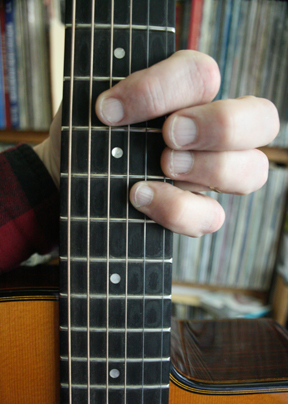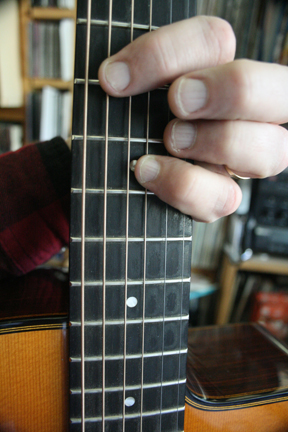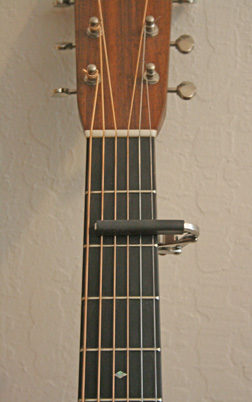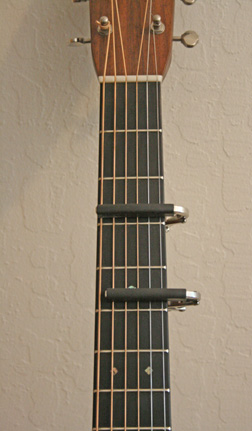Newsletter #12 • April 2008
News, Music, tablature, MP3s, to download, play along with & learn!
Mandolin Solo: “The Ash Grove”
Accordion Solo: “Meet Me Tonight in Dreamland”
Guitar Solo: “Meet Me Tonight in Dreamland”
Mandolin Solo: “Meet Me Tonight in Dreamland”
Jazz Violin Solo: “Chicago”
Guitar Solo in Octaves: “China Boy”
Guitar Solo: “Pretty Polly”
Hot Club Swing preview
Mandolin Solo: “Swing in Minor”
It’s been a few months since we posted Musix Newsletter #11 and a lot has happened in the meantime. I always try to time my projects so that they’re released at decent intervals though out the year, but it never seems to work out that way. Turns out I have five, count ’em, five new book/CD sets and DVDs that have popped out in the past few weeks. If I was one for metaphors I might say, “like crocuses in the Spring.”
Following is a bit of information on each new project. You can click the links to go directly to each one’s web page for full details, song lists, and ordering information. Most of the following downloadable music, TABs, and MP3s are from the new releases.
For those of you living in the eastern San Francisco Bay Area, I’m hosting four Monday night bluegrass jams 4/28—5/19 at Redhouse in Walnut Creek. Get ready for those summer jam session!
Guide to the Capo
My latest DVD is titled “Guide to the Capo.” It’s aimed primarily at beginning and intermediate guitar players and covers all the relevant issues pertaining to using the capo. We start with the basics of what a capo is and how to effectively use it. Along the way we explore the music theory of why the capo works the way it does and how that will tell us what key we’re really in when we’re capoed.
More advanced players will be inspired to create new arrangements by the sections on partial capoing, using two capos on one guitar, and two guitars capoed at different frets. I’ve written out one of the songs from the DVD, “Pretty Polly,” below, which uses the capo to simulate a “dropped D”— style tuning.
Favorite Mandolin Picking Tunes
I hope you mandolinists will check out “Favorite Mandolin Picking Tunes.” It’s a book/CD set that includes forty three eclectic tunes, from bluegrass and jazz standards to classics, waltzes, polkas, and other ethnic music. It’s a collection of tunes and styles that I think every mandolinist ought to be familiar with. I’m certain that at some point you will need a polka, a Russian tune, a few bluegrass tunes, maybe a rag, certainly some waltzes. “Favorite Mandolin Picking Tunes” is an update of a book I wrote about eight years ago called “Great Mandolin Pickin’ Tunes.” Mel Bay asked me to double the number of tunes in the book and it was renamed “Favorite Mandolin Picking Tunes.”
Swing Jazz Violin with Hot-Club Rhythm
For you fiddlers we have “Swing Jazz Violin with Hot-Club Rhythm” by Jeremy Cohen and myself. Jeremy is an awesome jazz fiddler with classical technique and tone plus a swing that won’t quit. I’ve been after him for over twenty years to write a book about swing and jazz fiddle. We finally found a project we could collaborate on last year when I asked him if he’d be interested in doing a violin version of my “Gypsy Swing & Hot Club Rhythm” project. He was enthusiastic and together we expanded it to include an additional four great swing and jazz standards, jazz violin solos on all the songs along with the melodies, plus two string quartets that Jeremy wrote on “St. Louis Blues” and “Some of These Days.” The 80-page book comes with two CDs including all the material at both slow and regular speeds. It’s a great package, if I do say so myself.
I met Jeremy over twenty years ago when our kids were in the same preschool program. Since that time I’ve played and recorded with his “Violin Jazz” group. One of the specialties of the group is pops concerts with symphony orchestras performing the music of great jazz violinists like Joe Venuti, Eddie South, Stephane Grappelli, Joe Venuti, and Stuff Smith which Jeremy has scored for jazz band and symphony. Jeremy has been nominated for two Grammy awards for recordings with his new string quartet “Quartet San Francisco.”
“Swing Jazz Violin with Hot-Club Rhythm” is formatted just like my “Gypsy Swing & Hot Club Rhythm” book/CD set and you’ll learn by practicing and improvising along with a recorded “Hot-Club” style band. Build your strength, stamina, focus, and improvising chops by jamming with the band. Jeremy also included helpful and informative tips on playing jazz on the violin.
Each melody and solo is recorded at both slow and regular speeds, and you’ll be able to practice them — along with your own improvised solos — all with extended band rhythm tracks. Let the band back you up as you practice melodies and soloing. We’ll jam all night long! Just about every violinist at any level can play along with one speed or the other. Beginners can practice basic skills while more advanced players can hone their improvisation chops, each at their own individual learning pace. If you’re interested in playing jazz on the violin, this book is a must!
International Accordion Favorites
The wheels of the publishing business grind along slowly, especially these days when no one is quite sure what the next medium for publishing will be. Traditional distribution of hard copy books seems poised for a massive format change. Just how that change will shake out is yet to be seen. But I digress.
A few years ago, I began encouraging another friend of mine, accordionist Bruce Bollerud, to put together a book of the music he played. He’s from Madison, Wis., where I grew up, and I met him during my college years. We’ve kept touch since and on trips back to the midwest, we’ve often gotten together to jam. Every time we’d jam, he’d pull out two or three wonderful new songs that I’d never heard before. Most of them, he told me, were old Scandinavian fiddle or house party tunes, which of course he played on the accordion. He’d learned these songs as a kid from the old folks in the 1940s. I had never heard any of them from any other musicians. All of those fiddlers are gone now and I thought it would be a shame if these great melodies got lost in the fog of time. (To be honest, it was a selfish motivation: I wanted to learn and play these tunes myself. It was part of my midwestern and Scandinavian heritage.)
I kept pestering him about the tunes and eventually he told me he’d written out a few of them. I put him in touch with Bill Bay at Mel Bay Publications and they worked out a deal for two books: one of the Scandinavian tunes, another of accordion music from around the world. On my next couple visits to Madison, I recorded Bruce playing the songs and put together the accompanying CDs. The final two projects are called “Uff da, Let’s Dance: Scandinavian House Party Music” and “International Accordion Favorites: Waltzes, Polkas, Tangos, Hornpipes, Two-steps and more!” “International Accordion Favorites” has just been published and it’s now available.
Along the way I got so inspired that I wrote a mandolin version of “Uff da, Let’s Dance: Scandinavian House Party Music.” We’re still waiting for both the mandolin and accordion versions of those books to be published. We’ll keep you posted!
“International Accordion Favorites: Waltzes, Polkas, Tangos, Hornpipes, Two-steps and more!” is for accordion players interested in accordion music from around the world. It contains a sampling of ethnic folk music from Europe and the Americas and forms the foundation of a basic folk accordion repertoire. The songs are from many nations and guaranteed crowd pleasers! And they’re fun to play. Every song can be heard on the included CD, 33 songs in all! If you’re not an accordion player and can read music, it’s a great collection of tunes to know.
The Art of Rhythm Guitar: Strums
Finally, I’m very pleased to announce the release of Jim Nunally’s first instructional DVD, Jim Nunally’s “The Art of Rhythm Guitar: Strums.” We co-produced it and, in my humble opinion, it’s really great! Jim has a friendly and easy-going way of teaching and he’s one of the best guitarists in the world. Jim’s DVD includes a variety of rhythm guitar techniques that ANY guitarist can use to improve their playing. It’ll help your bluegrass, folk, or country rhythm. Each strum is demonstrated slowly and precisely. It’s completely accessible to all levels. Jim teaches eight useful strum patterns plus six strum patterns with bass runs, strum dynamics and technique, how to use strum patterns in songs. He also covers fretting economy and how and when to use strums as accents.
Parking Lot Picker’s Songbook
Don’t forget about our best sellers that have been out for awhile. We now have three editions of the massive 300 page “Parking Lot Picker’s Songbook,” one each for guitar, mandolin, and banjo. They’re a great source for learning over 200 bluegrass, old time and gospel songs and handy to have at a those summer jam sessions when you need to know a lyric, chord, or melody. The Parking Lot Picker’s Songbooks are packaged with 2 CDs which include EVERY song in the book. Each book also includes info on how to transpose any song to ANY key to better fit your voice or how you play your instrument.
Gypsy Swing & Hot Club Rhythm for Guitar” and “Gypsy Swing & Hot Club Rhythm for Mandolin
If you’re interested in learning gypsy swing, you’ll love “Gypsy Swing & Hot Club Rhythm for Guitar” and “Gypsy Swing & Hot Club Rhythm for Mandolin.” Each teaches melodies, chords, and lyrics to twelve great standards in the gypsy swing /hot club style. You’ll learn by playing along with the band on the CD. All the tunes are recorded at both slow and regular speed so you really get a chance to hone your playing. Learn swing/jazz chord forms and how to comp rhythm chords in the swing and gypsy swing style. As far as I know, the mandolin book is the only one of its kind currently in print. Both editions are big fun. And, we’re planning to have a second book with another set of tunes in print by Summer 2008. I figured that people who’d learned all the songs in “Gypsy Swing & Hot Club Rhythm” would want another set of tunes more chords to work with and learn. Watch for it. You can hear a preview of the second project below.
Now, on to the the music, TAB, and MP3s! By the way, I include both slow and up to speed recordings of just about every tune from every book on the CDs that come packaged with the books. To save space online, I only post one speed.
Mandolin Solo: “The Ash Grove”
This one’s from “Favorite Mandolin Picking Tunes.” “The Ash Grove” is a popular wedding tune because it’s so lovely and recognized by so many people. It’ll make a good addition to your wedding repertoire.
Mandolin Solo: “The Ash Grove” pdf
Mandolin Solo: “The Ash Grove” MP3
Accordion Solo: “Meet Me Tonight in Dreamland”
Guitar Solo: “Meet Me Tonight in Dreamland”
Mandolin Solo: “Meet Me Tonight in Dreamland”
“Meet Me Tonight in Dreamland” is from Bruce Bollerud’s “International Accordion Favorites: Waltzes, Polkas, Tangos, Hornpipes, Two-steps and more!” I love the chord progression to this tune and the wonderful turn-of-the-century feel that it gives the song. It must be that change from the G to the E+ (augmented) chord. I’ve included three different written versions, one for accordion, one for guitar, one for mandolin and fiddle. The MP3 is a recording of the accordion version from the book.
Accordion Solo: “Meet Me Tonight in Dreamland” pdf
Accordion Solo: “Meet Me Tonight in Dreamland” MP3
Guitar Solo: “Meet Me Tonight in Dreamland” pdf
Mandolin Solo: “Meet Me Tonight in Dreamland” pdf
Guitar Chords: “Meet Me Tonight in Dreamland” pdf
Mandolin Chords: “Meet Me Tonight in Dreamland” pdf
Jazz Violin Solo: “Chicago”
Jeremy Cohen is one hot fiddler! Just listen to how he tears up “Chicago” from Swing Jazz Violin with Hot-Club Rhythm. Jeremy starts the solo with a swinging statement of the melody in the first half and then rises to flights of improvisatory fancy for the second half. Notice how he pushes against the melody of “Chicago” and adds rhythmic interest before taking off on a full blown improvisation that refers back to the written melody only occasionally. This solo is a great example of two very useful and slightly different approaches to jazz soloing on any instrument. The first plays around with the melody and augments it rhythmically and melodically, the second takes off with new melodic ideas. Jeremy annotates this solo in the book, along with all the others, and explains how he thinks about it and how he composed it. Of all the solos in the book, this is one of the intermediate to advanced pieces. The book also includes the music to “Chicago”’s melody along with recordings of Jeremy playing it at two speeds.
Jazz Violin Solo: “Chicago” pdf
Jazz Violin Solo: “Chicago” MP3
Guitar Solo in Octaves: “China Boy”
“China Boy” is a song from my “Gypsy Swing & Hot Club Rhythm” book/CD set. In this version of it, you’ll play the melody in octaves. Django Reinhardt often played with octaves to give his melodies and solos an added intensity. As with everything he did, he was a master of the technique. Charlie Christian and Wes Montgomery, along with just about every modern jazz guitarist, also used the octave technique to great effect.
In choosing a melody or passage to play in octaves, especially when you’re new to the technique, I suggest looking for something with a lot of quarter and longer notes. When playing octaves on the guitar your hand will jump around quite a bit. Longer notes and medium tempos will give you a fighting chance to play the line! Of course when you get to be as good as Django or Charlie, you’ll be able to play any line in octaves at any speed. For now we want to sneak up on the deal.
I play all the upper notes of the octave with the fourth finger, the lower notes with the first. Octave pairs on the guitar are played on strings one and three, two and four, three and five, four and six. You’ll need to mute the string in between. On strings one and three, and two and four, the notes will have two “open” frets between them. For example, the measure one A notes are played on fret ten of string two and fret seven of string four. The notes are separated by one muted string and two open frets. When you play the F notes in measure nine, the notes are played on fret ten of string three and fret eight of string five. The notes are separated by one muted string and one open fret. (See photos below.)


It can take some time to play octaves smoothly. Just remember: practice may not make perfect but it will make better.
Guitar Solo in Octaves: “China Boy” pdf
Guitar Solo in Octaves: “China Boy” MP3
Guitar Solo: “Pretty Polly” using a capo to simulate a dropped D tuning
“Pretty Polly” is from two recent publications, first from my “Guide to the Capo” DVD and also from “The Parking Lot Picker’s Songbook.”
For years I have experimented with playing songs in what’s called a “dropped D” tuning. When Jim Nunally and I recorded a version of “Reuben’s Train” on our “Brothers at Heart” CD, I used the “dropped D” tuning. With “dropped D” the guitar is tuned standard except for the sixth string, the thickest, which is lowered from E to D, one full step. If you then play a song out of the key of D, you get a nice low D note on the open sixth string. In addition to retuning the sixth string, I also capoed the guitar at the second fret to record “Reuben’s Train” putting the song in the key of E.
One of the drawbacks to the “dropped D” tuning, or any other tuning for that matter, is that to move in and out of it you have to, well, retune your guitar. That can be tedious, time consuming, and difficult, especially in a performing situation where people are waiting expectantly for your next nugget or kernel of musical wisdom. You don’t want to have to be cranking away for too long to get it to sound right. One way around the retuning problem is to simulate the dropped D by placing your capo at the second fret over strings one through five, but not six. If you strum a D with this capo placement, you’ll get the effect of a dropped D tuning, except that since you’re capoed, you’re really playing in E. (See photo right.)
If E is too low, you can use use two capos, the lower capo on all six strings, the upper capo on strings one through five. The capos will have one open fret between them. I usually sing “Pretty Polly” in the key of G with one capo on all six strings at fret three, the other covering only strings one through five at fret five. I still play what look like the key of D chords but because of the capoing, the sound is in the key of G.
For now, let’s keep the arrangement simple. Put your capo at the second fret over strings one through five, but not six. You’ll need a Shubb-style capo with an open clamp to allow you to leave one string uncapoed. (See photos below.) Let’s have at it!


When I strum the D chord, I try to de-emphasize the F# note on the second fret of string one to emphasize a modal sound. To me a modal sound is neither major or minor. Since the F# is the third of the D chord, it determines whether the D is major or minor. If I leave it out, or at least lessen the F#’s volume, I preserve the ambiguity of whether the D chord is major or minor. The melody also avoids F# notes in favor of F naturals to add even more of a modal feel.
Guitar Solo: “Pretty Polly” using a capo to simulate a dropped D tuning pdf
Guitar Solo: “Pretty Polly” using a capo to simulate a dropped D tuning slow MP3
Guitar Solo: “Pretty Polly” using a capo to simulate a dropped D tuning regular speed MP3
Guitar Solo: “Pretty Polly” using a capo to simulate a dropped D tuning with vocal MP3
Hot Club Swing preview
As I mentioned above, I’m currently working on a followup to the “Gypsy Swing & Hot Club Rhythm” guitar and mandolin book/CD sets. The tentative title is “Hot Club Swing.” (Editor’s note: We eventually titled it “Gypsy Swing & Hot Club Rhythm for Guitar Vol. II” and “Gypsy Swing & Hot Club Rhythm for Mandolin Vol. II.”) Here’s a preview of the recording without any edits. It’s the guitar version. We don’t have the mandolin version finished yet. Sorry! It’ll be a lot like this except it’ll have a rhythm mandolin in the band and the leads will be played on mandolin. We’re also not sure which of the tunes will make it to the final set, but there’s a good chance these favorites will make the cut. “Limehouse Blues,” “Clouds and Shadows” (an etude to Django’s “Nuages”), and the tango “El Choclo” are in this rough preview. You’ll hear the engineer, a metronome, sniffling and snuffling, etc. None of that will be in the final version! Let us know what you think.
Mandolin Solo: “Swing in Minor”
“Swing in Minor” is a tune from my “Gypsy Swing & Hot Club Rhythm” book/CD set. The melody is an etude to the chord changes of Django Reinhardt and Stephane Grappelli’s classic “Minor Swing.” You can play this solo, as well as the melody to “Swing in Minor” from “Gypsy Swing & Hot Club Rhythm,” over the chord changes to “Minor Swing.”
Much of the solo is built around a riff where you’ll slide up to a seventh fret note and then play the same note on the next highest open string as in measures four, seven, and twenty nine. Solos on “Minor Swing” are usually two choruses in length, that is, you’ll play twice through the chord changes.
Mandolin Solo: “Swing in Minor” pdf
Mandolin Solo: “Swing in Minor” MP3
That’s all for now. Keep in touch and keep playing music!
Dix Bruce
© Copyright 2008 by Musix